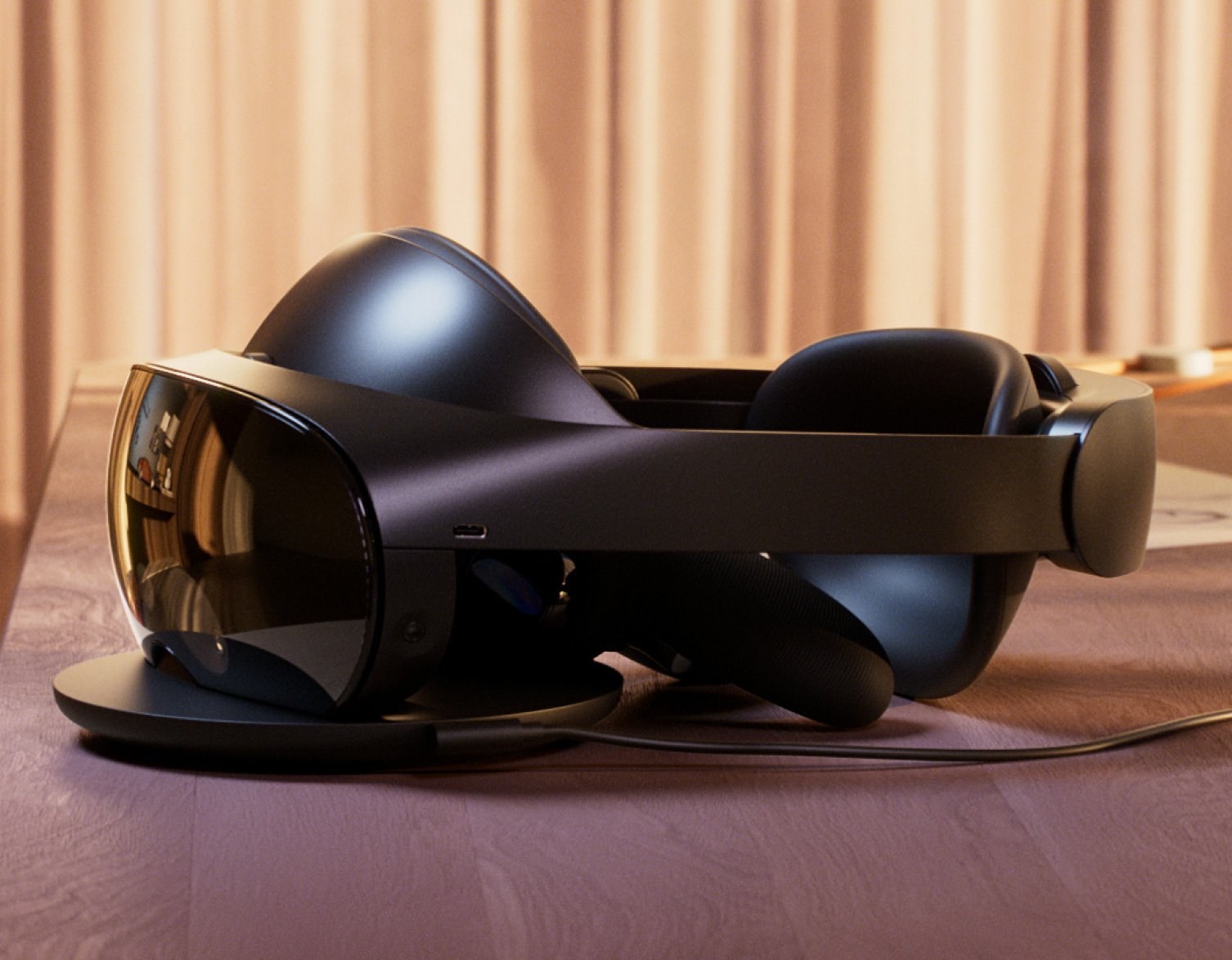Which VR Setup Works Best for Location-Based Entertainment?
Posted on: 2021-05-10
Considering adding VR to your location-based entertainment business? Whether you’re a family entertainment centre, an escape room, an arcade, or any other kind of business where people visit in groups to have a good time, there are quite a few options out there.
Why and how to add VR to your business? Read this.
We’ve been working in the VR entertainment space ever since modern VR headsets made it possible — and we stay on top of the trends. And we can break the options down into three broad categories. But first, let’s talk about the style of VR you want to operate: room-scale versus booth.
Booth-Style VR
In this arrangement, the player occupies a relatively small space. They might be standing or sitting — but if they’re standing, they’re typically only going to have enough room to move their arms around and maybe take a step or so.
- Requires little space per person
- Supports generally stationary experiences
- Operators often install several booths
There are plenty of great experiences that can be had this way. Many booth VR operators obtain commercial licences to consumer-level games, like those you could pick up on online platforms.
Players will pay for some amount of time and have their pick of various games, and multiplayer may be possible with some setups. But as the player is physically limited to remaining in place, if the game involves locomotion (ie., the player would move around in-game), there is a risk of VR motion sickness. Still, these VR arrangements allow people without home VR to get a taste of what it's like to visit an amazing VR world.
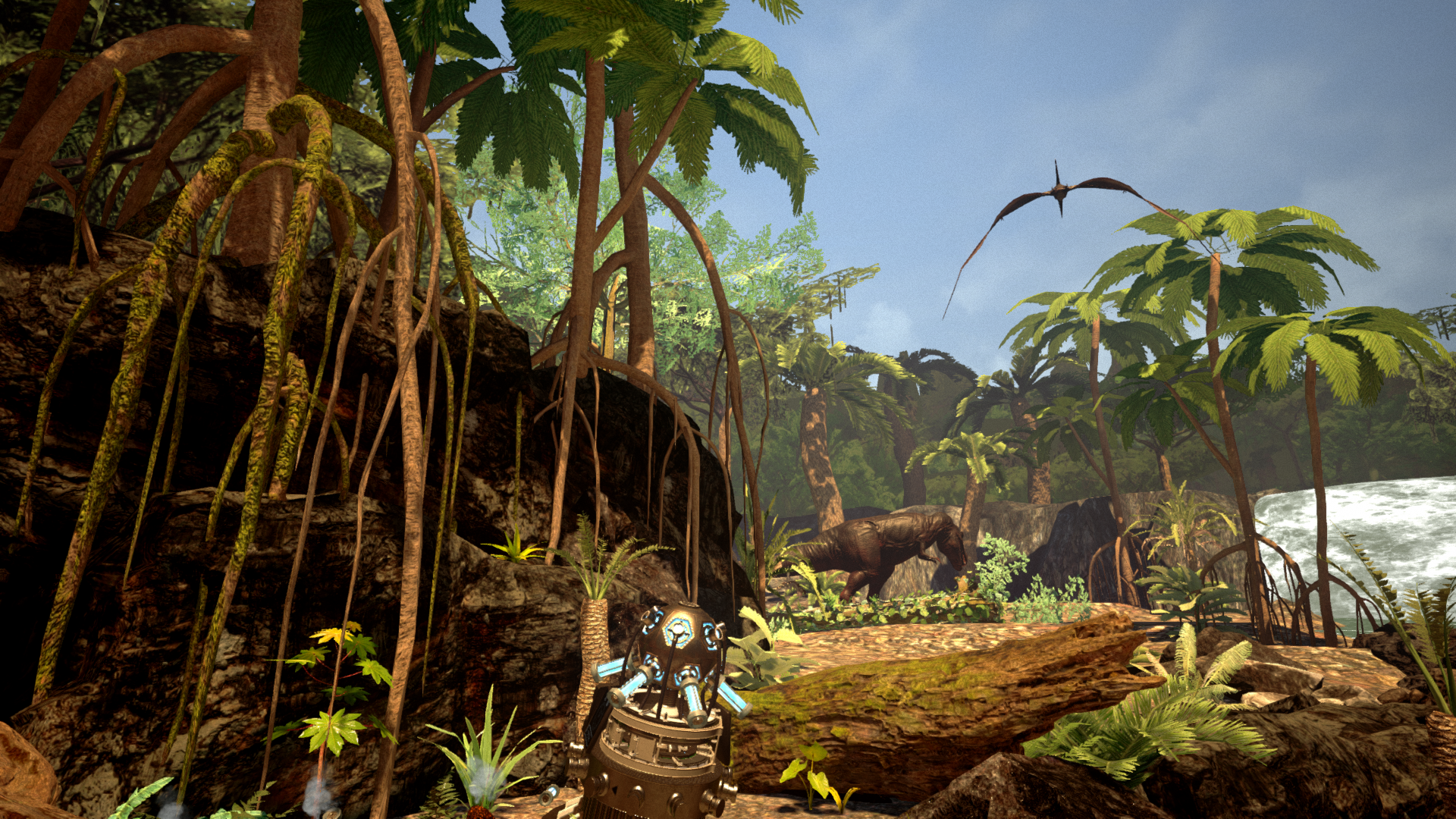
Room-Scale VR
As the name suggests, room-scale VR takes place using an entire room. Players are typically free to move around the real space as the headsets give the immersive experience of moving in the virtual space in response. No weird, expensive treadmills: just their own legs.
- Players physically walk around, meaning extremely intuitive controls with no barriers
- Synchronization between body and senses means people don't experience motion sickness
- Demonstrates the full promise of VR in an extremely powerful way
You’re also often looking at more advanced and entertainment- business-friendly VR experiences. As consumer-level game developers are generally targeting home users with minimal space (more akin to the commercial booth option) with their applications, they tend not to use space on the level of an entire room. They’re also designed for remote multiplayer, if any at all.
Developers for room-scale VR, on the other hand, are very conscious of the circumstances their applications will be deployed in. They’ll take into account local multiplayer, with players moving physically around the same space. They’ll design their experiences to be compelling and complete within the timespan of a typical location-based entertainment activity (35 - 45 minutes) for maximum customer satisfaction.
And room-scale VR is something that even the vast majority of home VR enthusiasts don’t have access to — so there’s huge opportunity here to offer something genuinely new and innovative that’s also future-proof.
High-end VR headsets connected to PCs
Now that we've covered the two major types of entertainment center VR, let's talk headsets. The most obvious technical setup is simply an adaptation of traditional home-based VR. Using a headset such as the HTC Vive, Vive Pro, or Valve Index, you recreate what many people have at home, powering the headset via a high-end PC.
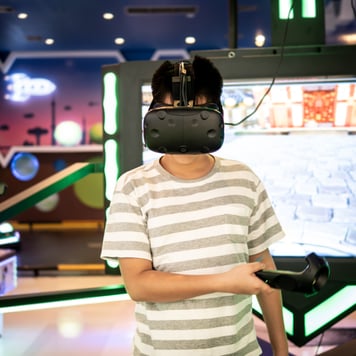
This more or less immediately works for VR booths. However, when you start to look at room scale, things start to get a bit tricky. Tracking multiple players may not be easy to get going right out of the box — and of course, you’ve got the cables to worry about.
Some operators extend the cables and rig them to hang from the ceiling, but whatever you do, it’s an inherent limitation and doesn't scale well for groups.
High-end VR headsets connected to backpack PCs
So, there is a solution to the problem of cables dragging everywhere and tripping people over: backpack PCs.
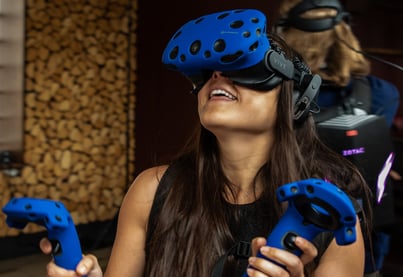
You can take those same high-end headsets and connect them to backpack PCs. You’ll need to handle charging them up, sure, but the result is that players are able to walk around the room freely — which makes it the perfect way to bring the highest possible quality VR to the room-scale format.
When you want the power of something like the HTC Vive or Valve Index with the freedom of physical locomotion, this is what you need.
Truly Wireless: Oculus Quest
The other option? Go fully wireless. Outside keeping the headsets charged, the Oculus Quest and Quest 2 are the streamlined VR platforms of entertainment operators’ dreams.
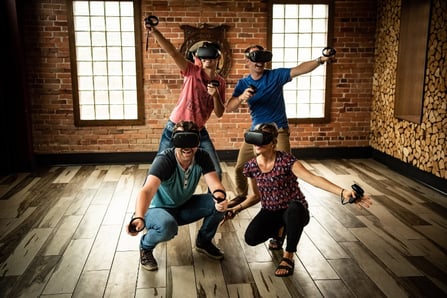
You’re sacrificing a little raw power, but in exchange, you’re getting hours of play on a single charge, and your customers just need to slip the headset itself on and grab two controllers. No backpack to weigh them down, and no wires to get in the way.
The simplicity presents an extremely attractive opportunity for location-based VR, whether you’re looking at booths or (especially) room-scale.
Which Headset To Choose?
Now you know the differences, the question is: which to choose?
That will depend on what you want to offer to your customers. If you’re content with a booth setup, you don’t need to worry about the backpacks, so it’s just a question of the visual quality you want to deliver.
If you want to do room-scale, then forget about the traditional PC setup. Choose the backpack PC option if offering the absolute highest visual quality is a priority — otherwise, the Oculus Quest 2 is a very affordable, easily maintainable option.
Whether you want to do booth or room-scale? That will come down to the kind of business you’re running and the space you have available. For most location-based entertainment centres, you’ll want that immediacy of true local multiplayer, the focused experiences of the business-friendly room-scale experiences, and the full immersion of being able to roam around the room as a compelling selling point. You’re offering something they simply can’t do elsewhere. Our advice? If you have the space, definitely do room-scale (and here's some info to get you started).
Need a VR Partner?
Like I said. At vrCAVE, we’ve been in the business of helping entertainment center owners get up to speed on VR for as long as it’s been a real business application of the technology. We’ve seen headsets come and go. We’ve been there since the very first batches of the backpack PCs. We’ve not only developed a suite of incredible VR experiences developed specifically for the entertainment business context, but we’ve developed a reliable means of actually tracking all those headsets in the virtual space reliably.
In short, we’re here to help you get set up with everything you need to get ready to welcome your first VR customers in weeks. Drop us a line if you want to get started or learn more about becoming a partner here.

